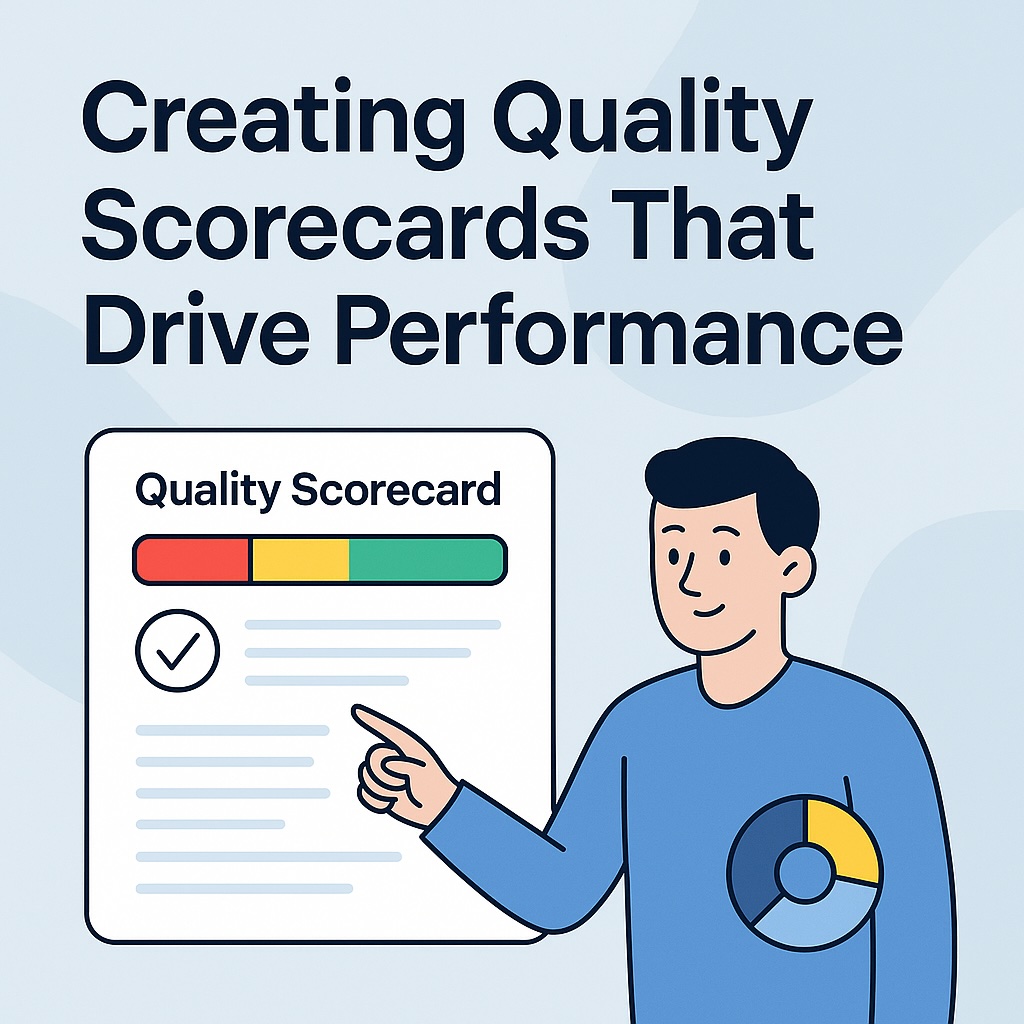
Creating Quality Scorecards That Drive Performance
1. Keep It Focused and Actionable
The biggest trap when creating a scorecard is trying to measure everything.
When you have 20 or 30 questions, evaluations become inconsistent, time-consuming, and impossible to interpret.
The best-performing teams focus on five to seven key criteria per channel.
That’s just enough to evaluate the essentials — empathy, clarity, accuracy, and resolution — without drowning in details.
Each question should directly connect to a business outcome.
If a criterion doesn’t impact customer satisfaction, first contact resolution, or operational efficiency, it probably doesn’t deserve to be there.
Your goal isn’t to measure everything; it’s to measure what moves the needle.
2. Prioritize What Really Matters
Not all criteria are created equal.
A missed greeting isn’t as important as failing to solve the customer’s issue — yet many scorecards treat them the same.
To make your evaluations meaningful, assign more weight to the behaviors that truly influence satisfaction.
For example, how well the agent understood and reformulated the customer’s problem will often have more impact than the tone of the opening sentence.
This approach keeps your feedback fair and focused.
It also makes your coaching sessions more strategic — helping agents spend time on what really changes the experience, not just on what’s easiest to measure.
3. Make Results Instantly Understandable
A great scorecard shouldn’t require explanation.
Your agents and team leads should be able to look at it and instantly understand where they stand and what to improve.
That’s where visual clarity comes in.
Replace walls of numbers with clear visuals: color bands for performance ranges, trend lines to show progress, and summaries that highlight where the biggest gaps are.
When people can see their evolution — not just a single score — the discussion shifts from blame to growth.
Suddenly, quality monitoring stops being an audit and becomes a coaching tool.
4. Automate to Stay Consistent
Even the best-designed scorecard loses value if applied inconsistently.
Human evaluations are subjective — and the larger your team, the harder it is to maintain alignment.
That’s where automation changes everything.
With AI-based Quality Monitoring, you can define your criteria once — in natural language — and let the system analyze every call, email, or chat automatically.
Instead of scoring a small sample manually, the AI evaluates 100% of your interactions.
Managers can then focus on the conversations that matter most, while still ensuring that every score follows the same logic and standards.
This doesn’t replace the human role; it amplifies it.
Humans bring context and empathy, while AI guarantees consistency and scale.
5. Treat Your Scorecard Like a Living Product
Your business evolves — so should your scorecard.
What mattered six months ago may not matter as much today.
Make it a habit to review your scorecards regularly.
Are you still measuring what drives satisfaction?
Are the weights aligned with your current priorities?
Are the visuals still helping teams understand their progress?
Continuous improvement applies to your evaluation system as much as it does to your product.
The most successful QA teams treat their scorecards like a product: they test, iterate, and refine.
From Measurement to Motivation
When built right, a scorecard does more than track performance — it transforms how teams think about quality.
It turns evaluation into learning, numbers into insights, and insights into action.
The key is to keep it focused, fair, and visual.
Start small, automate where you can, and evolve as your teams grow.
And if you want to skip the complexity, Gravite’s Scorecard Builder lets you create, automate, and visualize performance instantly — no spreadsheets, no bias, just clarity.





